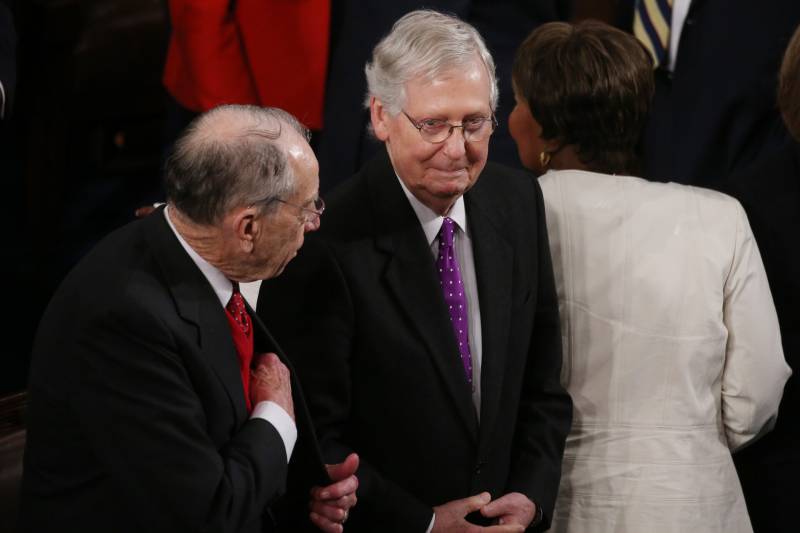This scenario of octogenarian politicians being asked to step aside to make way for younger representatives is not unique to Feinstein. In fact, in the early 1980s, another California politician, Republican S.I. Hayakawa, received similar pressure to retire at the end of his short-term stint as senator after he was seen napping during meetings.
This summer, Senate Minority Leader Mitch McConnell, 81, appeared to freeze twice in front of the press. Speaker Emerita Nancy Pelosi, who turns 84 in March, has faced criticism for announcing her intention to run again next year.
According to Axios, the U.S. Senate now has three octogenarians and one nonagenarian. More than half of the Senate is over 60.
“For those of us who want to see a new generation of leaders, it’s hard,” Aimee Allison from She the People, a group dedicated to getting women of color in office, told KQED after Pelosi said she would run again. “We do need a new generation of leadership that looks like who lives in California, in the country. And that’s going to require people in their eighties to make space.”
The Senate has 100 members, two from each state. Eight politicians, including Feinstein, are from the “Silent Generation,” the label given to people born between 1928 and 1945. According to the Pew Research Center, 66 are Baby Boomers, the demographic cohort born between 1946 and 1964.
In the House, almost 45% of the 435 representatives are Baby Boomers. Twenty-one are from Feinstein’s generation.
“There’s a big gap between the age of the voting age population and the age of representatives. And the age of representatives are significantly older,” said Daniel Stockemer, a professor at the University of Ottawa who studies demographics in governments across the world.
Is the US an outlier among other countries?
“The U.S. is one of the oldest democracies when it comes to the representatives, or the members of Congress,” Stockemer said.
When Congress convened in January 2023, the average age of those serving in the House of Representatives was 58, according to Stockemer. In the Senate, the average age was 65.
“To give you the average age (of representatives) around the world, [it’s] around 50,” he said. “While representatives in nearly every country are older than the voting age population, the U.S. is a relatively extreme case.”
Stockemer also runs a database that tracks the ages of legislators, which the Financial Times analyzed in September, showing that the United States has the oldest representatives among G7 countries. According to Stockemer’s latest available data, the median age for U.S. legislators is 58. Japan’s most recent available data show the country was close behind at 57, in 2021.
In Canada, which set the mandatory retirement for senators at 75, the median age of lawmakers was 54 in 2021. In Germany, it was 49.
In the United Kingdom in 2019, the median age was 50. In both France and Italy in 2022, the median age was around 49.
Why is it hard for younger people to run for office?
Senior politicians can undoubtedly bring experience to their office, said Stockemer. It’s more that younger politicians need their spot too.
Stockemer said that his data “just showed that there are some discrepancies in representation [and] it might want to be addressed.” He frames it as “a deficit in democratic equality.”
The laws in the U.S. also prevent younger candidates from running, Stockemer pointed out. Candidates must be 25 to run for the House and 30 for the Senate. Also, getting elected requires networking and financing that is an inherent disadvantage for younger people.
“There’s basically no limit on how much candidates can spend, and they spend more and more each election,” Stockemer said. “It’s very hard for younger members to keep up. … They don’t have the connections yet.”
Incumbent politicians also have a major advantage in the U.S. since there is little turnover. Feinstein had been a senator since 1992.

